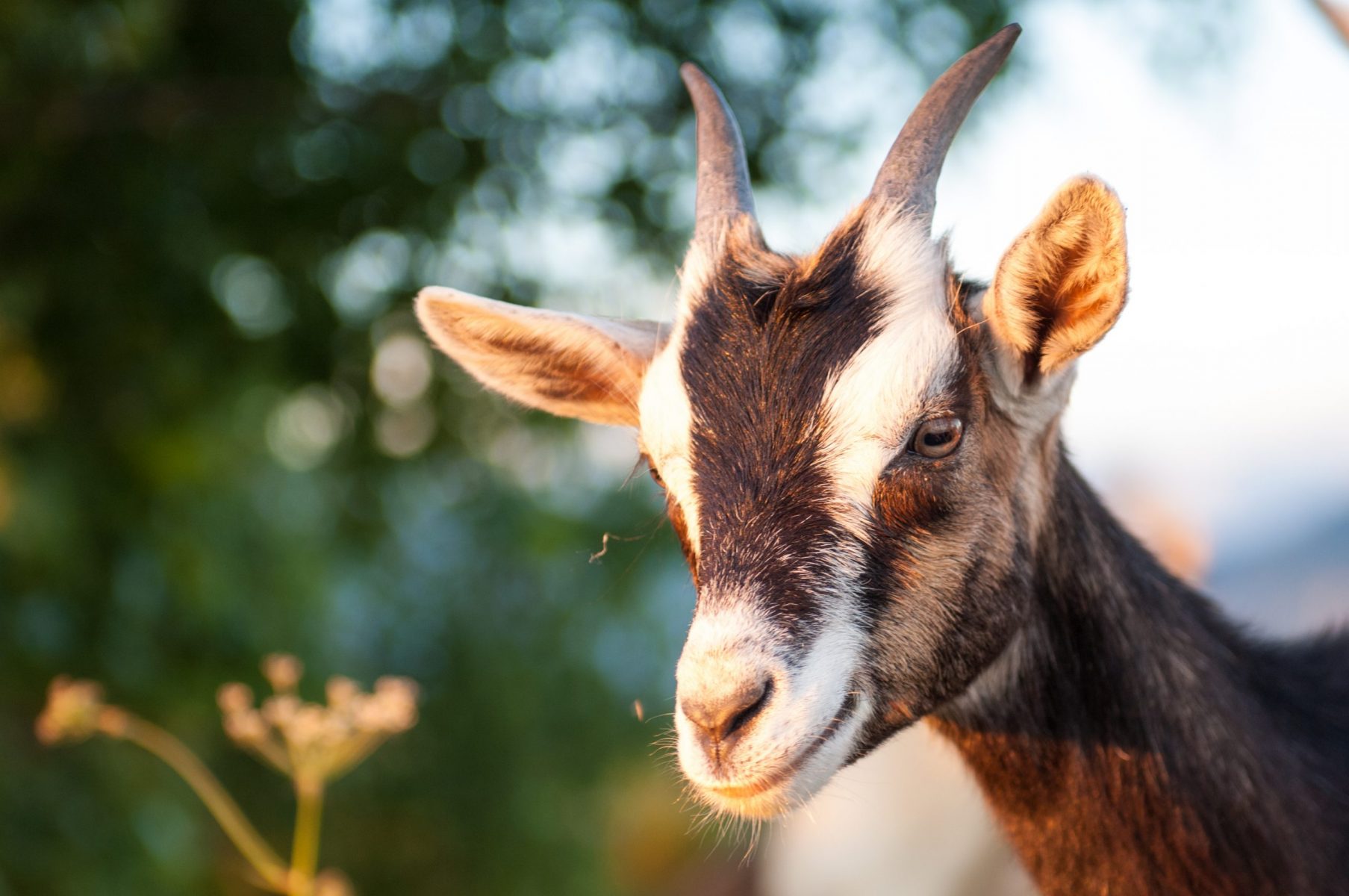
Alpine goats are fascinating creatures that have captured the hearts of animal enthusiasts around the world. These magnificent animals originate from the rugged and mountainous regions of the Alps, hence their name. With their distinctive appearance and unique characteristics, Alpine goats have become a popular choice for farmers, homesteaders, and even hobbyists.
In this article, we will explore 20 interesting Alpine goat facts that will not only impress you but also deepen your understanding of these remarkable animals. From their physical features to their adaptable nature, we will delve into the world of Alpine goats and discover why they have gained such popularity in the animal kingdom.
Key Takeaways:
- Alpine goats are friendly, adaptable, and excellent milk producers, making them a popular choice for farms and petting zoos worldwide. Their playful nature and rich, creamy milk make them a delightful addition to any animal-loving community.
- With their sturdy build, excellent hearing, and natural foraging instincts, Alpine goats are well-suited for diverse climates and environments. Their high milk yield and longevity make them valuable companions for both hobby farmers and commercial breeders.
The Alpine goat is a breed of domestic goats that originated in the French Alps.
The Alpine goat, also known as the French Alpine, is a versatile and popular breed known for its adaptability to various climates and its excellent milk production.
These goats are medium to large in size, with bucks weighing around 170-190 pounds and does around 130-160 pounds.
The Alpine goats have a sturdy built with a deep chest and strong legs, making them well-suited for climbing and navigating rugged terrain.
Alpine goats are known for their distinctive upright ears, which are usually erect and point slightly forward.
This unique trait aids in alertness and enhances their excellent hearing ability.
One of the key features of Alpine goats is their high milk production.
They are considered one of the best dairy breeds, with an average milk yield of 1,500-2,000 pounds per year.
The milk of Alpine goats is known for its rich and creamy texture, making it ideal for cheese and butter production.
Many artisanal cheese makers prefer Alpine goat milk due to its high butterfat content and distinct flavor.
Alpine goats have a friendly and outgoing temperament, making them a popular choice for both hobby farms and commercial operations.
They are known to be easy to handle and have a docile nature, which contributes to their excellent adaptability.
These goats have a varied coat coloration, including solid black, solid white, various shades of brown, or a combination of these colors.
Their coat is often sleek and fine, providing them with protection against cold temperatures.
Alpine goats are excellent foragers and can thrive on a diverse range of vegetation.
They have a natural instinct for browsing and can eat a wide variety of plants, shrubs, and grasses. This makes them highly adaptable to different climates and environments.
Alpine goats are known for their longevity, with an average lifespan of 10-12 years.
With proper care and nutrition, they can live even longer, providing a sustainable source of milk and companionship for goat owners.
These goats are highly productive and can breed throughout the year, with a gestation period of approximately 150 days.
Alpine goats can produce multiple kids per birth, making them an efficient breed for goat farmers and breeders.
The Alpine goat breed is known for its excellent udder conformation, with well-attached teats and good milk letdown.
This makes milking easier and more efficient, reducing the risk of mastitis and ensuring optimal milk production.
Alpine goats are adaptable to a wide range of climates, including hot and humid regions.
They have a tolerance for both hot and cold temperatures, making them suitable for diverse geographical locations.
Due to their excellent milk production and adaptability, Alpine goats are widely used in crossbreeding programs to improve other dairy goat breeds.
Their genetics have been instrumental in enhancing the milk yield and hardiness of various goat breeds around the world.
Alpine goats are highly social animals and thrive in a herd environment.
They are known to establish strong bonds with their herd mates and demonstrate a hierarchical structure within the group.
The Alpine goat breed has gained popularity in various countries, including the United States, Canada, and New Zealand.
Their versatility, excellent milk production, and friendly nature make them a sought-after breed for both commercial farming and backyard petting zoos.
Alpine goats require proper shelter and fencing to ensure their safety and well-being.
They are agile jumpers and climbers, so secure fencing is necessary to prevent potential escape.
These goats have a curious and playful nature, often engaging in playful behavior and climbing on structures or obstacles.
Providing them with enrichment activities and toys can keep them mentally stimulated and prevent boredom.
The Alpine goat breed has a relatively low maintenance coat, requiring minimal grooming.
Regular hoof trimming, deworming, and basic health check-ups are essential for maintaining their overall well-being.
Alpine goats are excellent milkers, and their milk is often used for making a variety of products such as cheese, yogurt, and soap.
Their milk is known for its rich flavor and nutritional value.
These goats have a lifespan of about 8-12 years, but with proper care, they can live even longer.
Providing them with a balanced diet, regular exercise, and routine veterinary care can contribute to their longevity.
Conclusion
In conclusion, Alpine goats are fascinating creatures with a rich history and unique characteristics. From their origins in the Swiss Alps to their adaptability in diverse climates, these animals have captured the attention of goat enthusiasts worldwide. With their excellent milk production, gentle temperament, and distinctive appearance, it’s no wonder that Alpine goats are highly sought after for dairy farming and as pets. Whether you’re interested in their impressive climbing abilities, their valuable contributions to the agricultural industry, or simply their charming personality, the Alpine goat is truly a remarkable animal. So, the next time you come across an Alpine goat, take a moment to appreciate the beauty and remarkable attributes of this wonderful breed.
FAQs
Q: What is the average lifespan of an Alpine goat?
A: On average, Alpine goats can live between 10 to 15 years with proper care and management.
Q: Are Alpine goats suitable for dairy farming?
A: Yes, Alpine goats are highly regarded for their excellent milk production and are commonly used in dairy farming operations.
Q: Can Alpine goats adapt to different climates?
A: Yes, Alpine goats are known for their adaptability and can thrive in a wide range of climates, from hot and arid regions to cold and mountainous environments.
Q: What is the average height and weight of an Alpine goat?
A: Alpine goats are medium to large in size, with males standing about 30 to 34 inches tall at the shoulder and weighing between 150 to 200 pounds. Females are slightly smaller, typically ranging from 28 to 32 inches in height and weighing between 100 to 150 pounds.
Q: Are Alpine goats good companions or pets?
A: Yes, Alpine goats are known for their friendly and sociable nature, making them great companions and enjoyable pets for those with adequate space and resources to care for them.
Was this page helpful?
Our commitment to delivering trustworthy and engaging content is at the heart of what we do. Each fact on our site is contributed by real users like you, bringing a wealth of diverse insights and information. To ensure the highest standards of accuracy and reliability, our dedicated editors meticulously review each submission. This process guarantees that the facts we share are not only fascinating but also credible. Trust in our commitment to quality and authenticity as you explore and learn with us.


